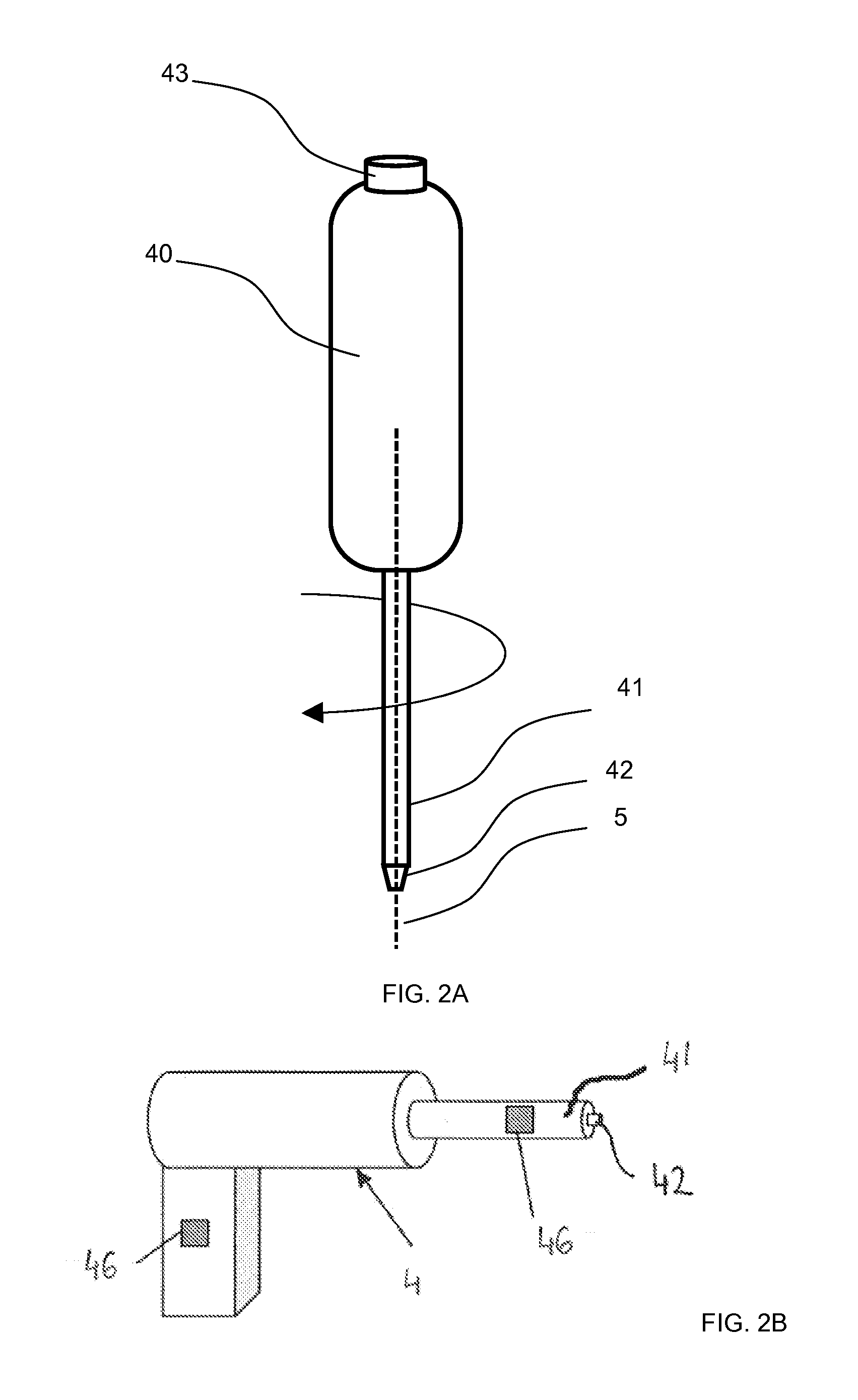Device for controlled adjustment of a surgical positioning unit
a positioning unit and controlled technology, applied in the field of controlled adjustment of surgical positioning units, can solve the problems of disadvantageous overall irradiation balance for patients, low safety of patients, and low accuracy of ct based systems, so as to increase the safety of patients
- Summary
- Abstract
- Description
- Claims
- Application Information
AI Technical Summary
Benefits of technology
Problems solved by technology
Method used
Image
Examples
example 1
Spine Surgery with Medical Imaging
[0188]According to a first advantageous embodiment of the invention, illustrated on FIGS. 9-12, the adjustment device can be utilized in spine surgery performed with medical imaging.
[0189]FIG. 9 shows a detail of a spine 3 with several vertebral bones.
[0190]An attachment unit 11′, which can be seen on side and upper views, is an percutaneous support having a general H shape for supporting a positioning unit for a drill guide (not shown here).
[0191]The pins 31 are used for attachment of the attachment unit 11′ to the spine 3.
[0192]Thanks to the flanges 32, different positions for the attachment of the positioning unit and / or the referencing unit (not shown here) are possible.
[0193]At the same time the flanges 32 can be used as X-ray visible markers.
[0194]Optionally, four screws 33 are used as an additional stabilization for support on the skin, whereas the screws 33 can be likewise designed as markers.
[0195]FIG. 10 depicts an attachment unit 11′ in d...
example 2
Hip Resurfacing Surgery with Medical Imaging
[0217]A second advantageous embodiment of the invention, illustrated on FIGS. 14-17, the adjustment device can be utilized in hip surgery performed with medical imaging.
[0218]For the use of the surgical instrument the positioning unit must be attached to the object being operated (here, the femoral head).
[0219]As one can see from FIGS. 14 and 15, this is achieved by a clamp mechanism which is implemented by the attachment unit 11′. The attachment unit 11′ is flange mounted to the femoral head 3 of the bone, such that there is an essentially rigid connection.
[0220]As one can deduce from the x-ray image in FIG. 14, the referencing unit 34 is flange mounted to the attachment unit 11′. The referencing unit 34 comprises additionally x-ray visible markers 32, whereby two x-ray images (e.g. lateral view and frontal view) allow determining the coordinates in space.
[0221]There are further functions that can be implemented via the markers 32 in part...
example 3
Knee Surgery with a Navigation System
[0234]In another preferred embodiment, illustrated on FIGS. 7 and 8, the surgical application is the total replacement of the knee joint; the solid 3 is the patient's tibia or the basis of the instrument fixed to the tibia, and the tracker 30, rigidly fixed to the bone, allows the navigation system 2 to track the tibia; the instrument 1 is a cutting block on which a cutting plane 14 must be aligned with the desired target plane selected by the surgeon; the instrument mobile part position is adjustable by three screws; the position of the three screws determine a unique position of the cutting block with respect to the fixed part 11.
[0235]The cutting plane position is defined by a slope angle, a varus / valgus angle, and a cut thickness with respect to the tibia.
[0236]The target position is entered into the navigation system by the surgeon or set to default values with respect to anatomical landmarks digitized by the surgeon with the navigation syst...
PUM
 Login to View More
Login to View More Abstract
Description
Claims
Application Information
 Login to View More
Login to View More - R&D
- Intellectual Property
- Life Sciences
- Materials
- Tech Scout
- Unparalleled Data Quality
- Higher Quality Content
- 60% Fewer Hallucinations
Browse by: Latest US Patents, China's latest patents, Technical Efficacy Thesaurus, Application Domain, Technology Topic, Popular Technical Reports.
© 2025 PatSnap. All rights reserved.Legal|Privacy policy|Modern Slavery Act Transparency Statement|Sitemap|About US| Contact US: help@patsnap.com



